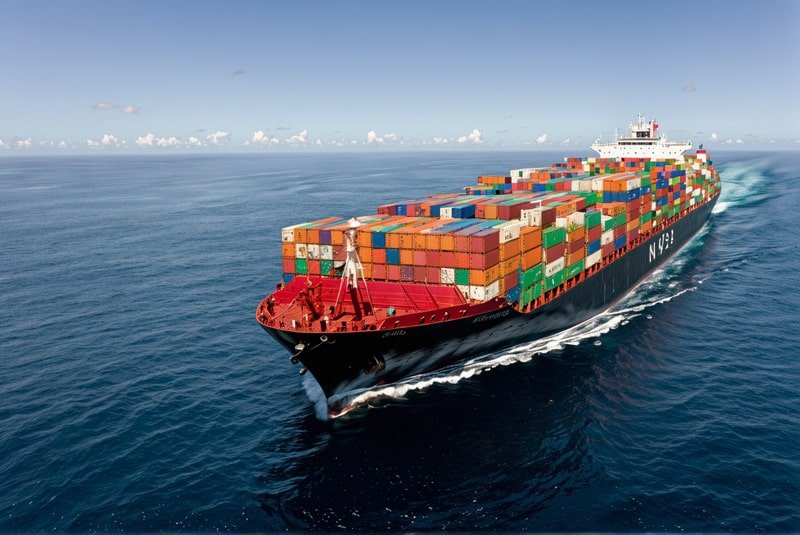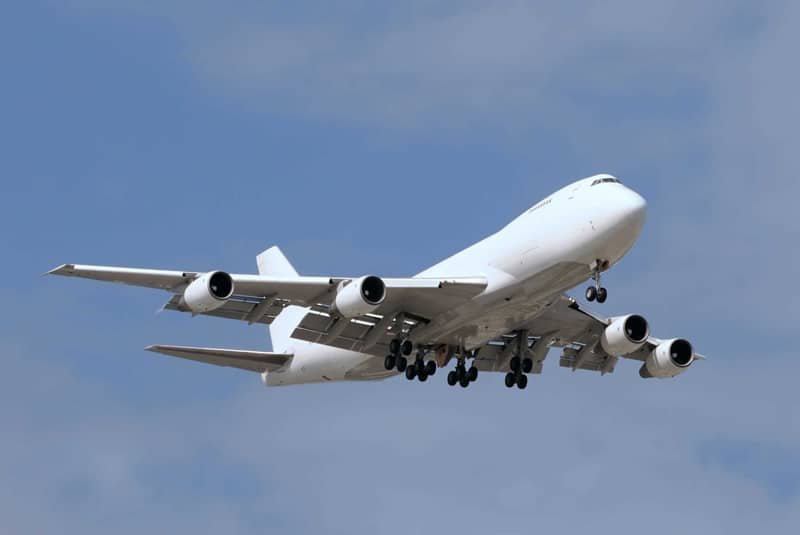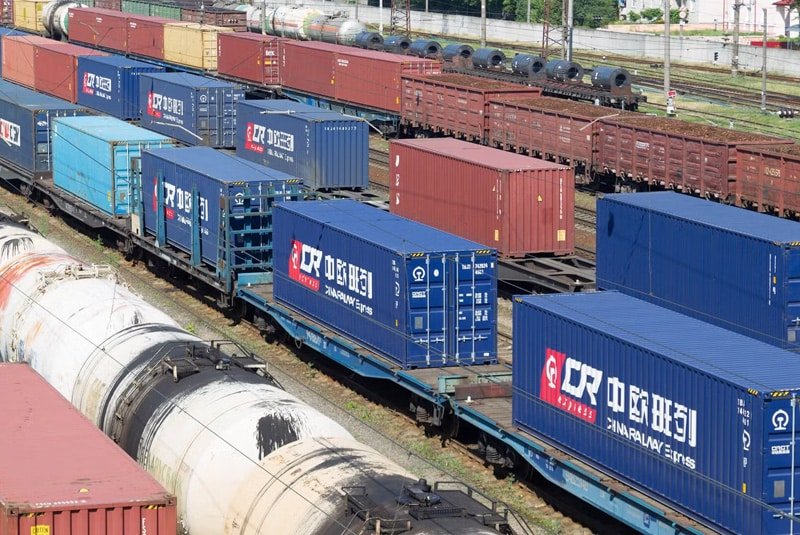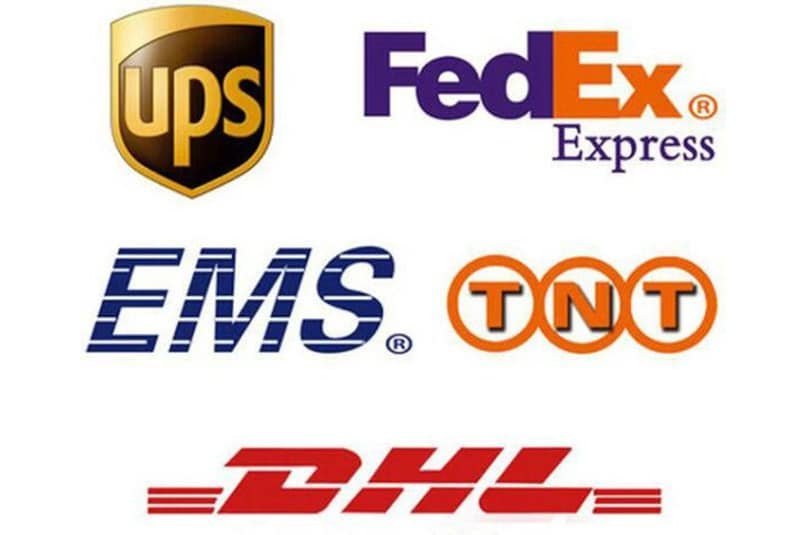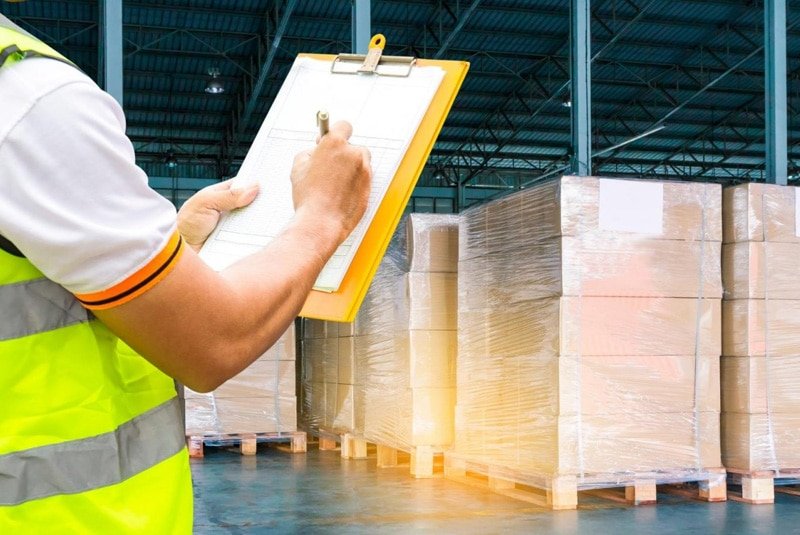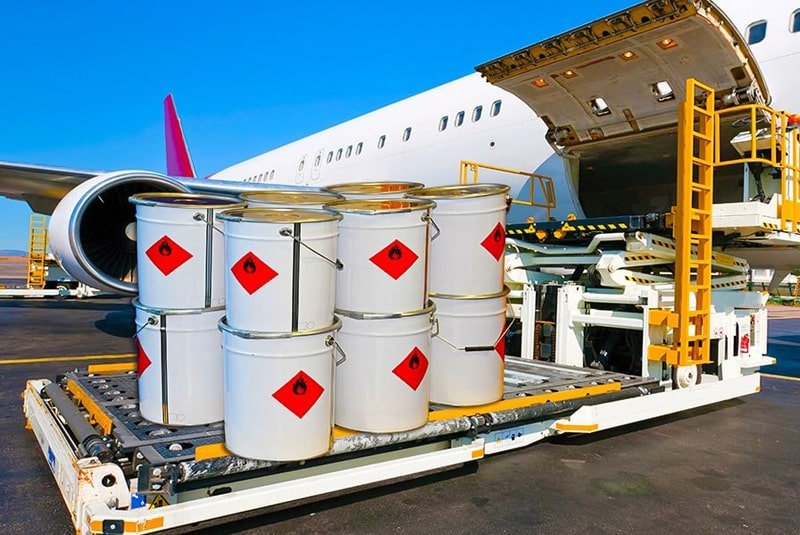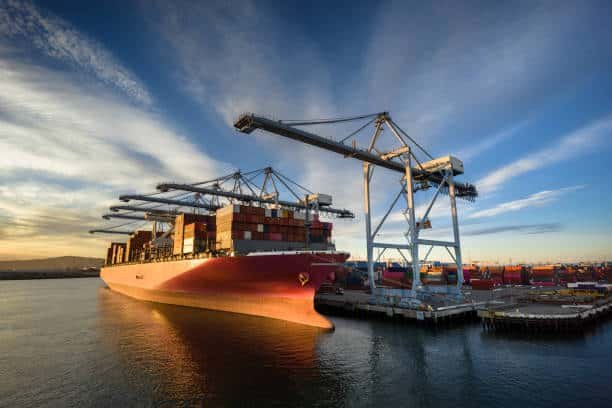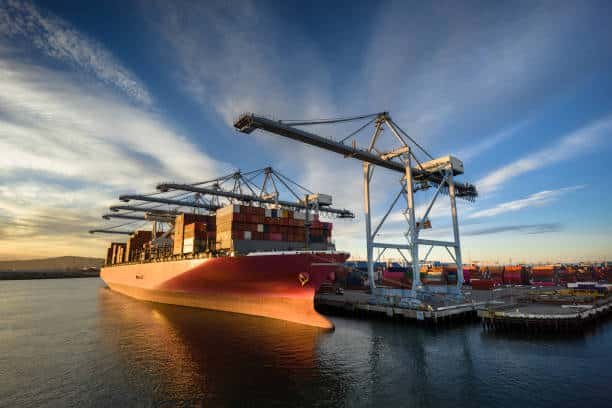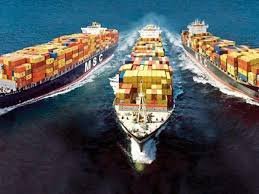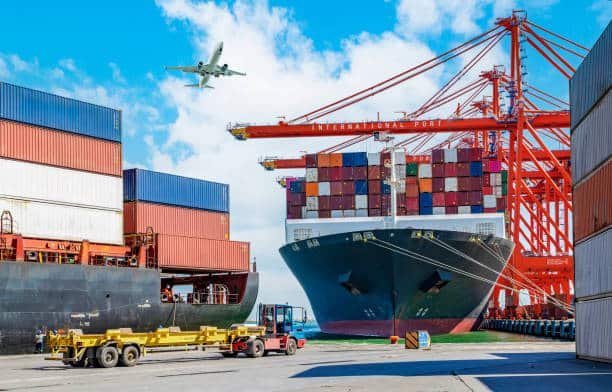There is increasing trade between China and Angola because Angola is an important exporter destination for Chinese products. Knowing about shipping from China to Angola is necessary for companies that want to build or improve their operations in West Africa. It explains everything about shipping from China to Angola such as different methods, prices, documentation and the best tips.
1. Comprehensive Shipping Methods from China to Angola
Pengangkutan Laut
The majority of people prefer to transport goods from China to Angola by sea freight because it is both popular and cost-effective. Typically, it takes anywhere from 15 to 25 days to ship a container from China to Angola, but certain routes can take longer if other places and carriers are involved.
Major Chinese Ports:
- Shanghai (CNSHA)
- Shenzhen (CNSZX)
- Ningbo (CNNGB)
- Qingdao (CNQAO)
- Tianjin (CNTXG)
Primary Angolan Ports:
- Luanda’s major cargo and freight activities take place at Port of Luanda (AOLAD).
- The port of Lobito (AOLBT) is the second biggest port.
- Port of Namibe (AONSZ) is located in the southern area.
- Untuk pilihan utama, bahwa Kenya (AOCAB) adalah lokasi setiap yang gugus di Cabinda.
Pilihan Kontena:
- TEU containers are ideal for moments when you have minor shipments.
- Most frequently, commercial cargo is carried in a 40ft Container (FEU).
- Voluminous goods are better transported using a 40ft High Cube container.
- Items that take up a lot of space are placed in Open Top/Flat Racks.
Pengangkutan Udara
Moving goods from China to Angola is quickest when they are shipped by air, as it generally takes 3-7 days. It is best for deliveries that are urgent, very valuable or not very frequent.
Major Chinese Air Hubs:
- Beijing Capital International Airport is the airport you should choose.
- The airport is officially noted as Shanghai Pudong International Airport (PVG).
- The popular airport serving Guangzhou is called Guangzhou Baiyun International Airport (CAN).
- Shenzhen Bao’an International Airport is known as SZX.
Primary Angolan Airport:
- The airport in Luanda for flights to/from Quatro de Fevereiro Airport is called Luanda (LAD).
Rail-Sea Combined Transportation
Shipping from China to Angola has a cost advantage thanks to the choice to use railways as well as sea freight. The China-Europe Railway Express can deliver goods to European ports and they can be shipped to Angola, but this route is less popular since sea freight for Angola is often much more economical and quicker.
2. Essential Documentation Requirements for Angola Import
Applications for clearing goods have to be complete and accurate to ship to Angola. When shipping goods valued at more than USD 5000 by sea, you must get an import license before you deliver them.
Mandatory Documents:
- In Portuguese or with a certified translation, the commercial invoice is used.
- Packing List
- A document called the Bill of Lading (B/L) or Airway Bill (AWB) is produced.
- If the value of the shipment is over $5,000 based on FOB, an import license is needed.
- Certificate of Origin is one of the main records.
- Insurance Certificate
- Customs Declaration is the official form needed for people entering the country.
Additional Requirements:
- Health Certificate for both food and pharmaceutical products
- Phytosanitary Certificate served for agricultural items
- Certificate for Quality Inspection
- In some cases, a Pre-shipment Inspection Certificate is needed.
- Permit from the required Angolan government offices
Special Considerations:
- All types of documents have to be legalized or apostilled.
- Official papers must be translated into Portuguese.
- It is better to use the original documents than the copies.
3. Angola Customs Clearance Process and Procedures
Clearing goods through customs in Angola is not simple for those who are importing their goods for the first time. Being familiar with these procedures prevents you from having delays and extra fees.
Pre-clearance Requirements:
- Import license will be handled by a customs broker.
- Send proof of your education to ARCCLA (previously called CNC).
- Clearly state and follow the tax and duty regulations for the shipment.
- Having the heating system checked for defects is important when the tech recommends it.
Clearance Steps:
- All the necessary documents are sent to customs.
- Customs determines how much tax has to be collected.
- Before being released, you need to cover payment for duties, taxes and fees.
- Inspection might need to happen physically for specific types and values of goods
- After all the requirements are in place, the order for release is issued.
Key Customs Authorities:
- ARCCLA refers to the organization responsible for regulating competition, commerce and logistics activities.
- The customs office in Angola
4. Detailed Shipping Costs Structure from China to Angola
It is very important to understand costs when making decisions about budgets and prices. The amount you pay for shipping can change depending on many criteria and it may go up or down based on the market.
Main Cost Factors:
- Containers: The size of the container determines its benefits in terms of efficiency
- There are higher costs for direct journeys and they take you there faster.
- During certain seasons, rooms are more expensive because demand increases.
- Fuel Surcharges are influenced by the changing prices of oil
- Port congestion can lead to delays and extra financial costs.
- Overall shipping costs are affected by currency exchange rates.
Container Shipping Rates (Approximate):
It usually costs between $2500 and $3500 to ship a 20ft container from China to Angola. On average, a 40ft container transport from China to Angola costs between $3500 and $5000.
Detailed Rate Breakdown:
- A 20ft container costs from $2,500 to $3,500.
- Using a 40ft Container, the prices vary from $3,500 to $5,000.
- The 40ft High Cube Containers have a price range from $3,800 to $5,300.
Additional Costs:
- Terminal fees (THC) vary between $200 and $400.
- Any fees for paperwork necessary are usually between $100 and $300.
- The costs for Customs Clearance can be between $300 and $800.
- You should expect to pay between $200 and $600 for local transportation.
- Insurers take a share of between 0.1% and 0.3% from the cost of the goods.
Air Freight Rates:
- The cost for eating General Cargo is $4 to $8 a kilogram.
- You can add a fast delivery for between $8 and $15 per kilogram.
- Many places set up minimum charges.
5. Shipping Regulations and Import Restrictions for Angola
Angola puts certain rules in place for imports to look after its local businesses and ensure that what is purchased is safe. To be able to import goods successfully, it is necessary to obey these regulations.
Prohibited Items:
- Narcotics and drugs that are not allowed by law
- Possessing weapons and ammunition (when not given proper licenses)
- Counterfeit goods
- Pornographic materials
- Secondhand clothing and textile products
- Some agricultural products are handled to ward off possible diseases.
- Radioactive materials
- Items that come from endangered species
Restricted Items (requiring special permits):
- Telecommunications equipment
- Medical tools and drugs
- Alcoholic beverages
- Tobacco products
- Chemical and hazardous compounds
- People usually purchase food items and drinks.
- Individuals usually get their outdoor plants from seeds or live plants.
- Both precious metals and stones
- Used and new vehicles
Import Duties and Taxes:
The 7 percent VAT is to be charged on the actual payment received from customers and the import duties raised depend on the type of goods being imported.
Tax Structure:
- Import Duty can be anywhere from 2% to 50% (depending on the imported item)
- VAT: 7%
- There is a Stamp Duty rate of 0.1%.
- The management charges a statistical fee of 2%
6. Key Logistics Challenges in Angola
Importing goods to Angola means dealing with some specific hurdles that must be overcome to achieve good results and keep costs under control.
Infrastructure Challenges:
- The existence of port congestion due to its low capacity
- Not enough systems for traveling inland
- Power difficulties at ports resulting in disruptions to port work
- A lack of warehouses in certain places
Administrative Challenges:
- Complicated ways of going through the bureaucracy
- Language barriers for those who speak Portuguese as the main language
- Long procedures related to customs and shipping
- Changes in the rules for regulation
Economic Factors:
- Changes in the value of the Angolan Kwanza
- Controls on foreign currency exchange
- Problems with banking and payments
- Inflation raised the costs of daily living.
Solutions and Mitigation:
- Make use of reliable local customs brokers.
- Allow for greater than usual transit times since things might slow down.
- Make sure you have extra stock of important materials on hand.
- Develop links with well-known local businesses.
7. Proven Best Practices for Shipping to Angola
Achieving good shipping services in Angola needs thorough planning and sticking to best shipping practices.
Pre-shipment Planning:
- Make sure to do proper research on what is required to ship products from another country.
- Develop reliable relationships with companies that manage freight forwarding.
- Get all the needed permits and licenses before proceeding with the shipment.
- Collect all the documents needed for the case.
- You may want to get insurance for your most valuable shipments.
Documentation Best Practices:
- Every document must be properly processed and certified by the authorities.
- Make Portuguese versions of any information needed for that country
- Always have additional copies of your important papers.
- Let documentation be managed by experts with experience.
- Make sure that all commercial information is correct.
Cost Management:
- Get shipping rates from a variety of different companies.
- If you have a small number of items to ship, try consolidating them.
- If available, organize shipments during times when there is less demand to save money.
- Ask for ongoing shipping deals that last for a long period.
- Remember to add extra expenses to the budget.
Risk Mitigation:
- Cover your goods with good insurance.
- Work together with well-known logistics services.
- Regularly observe all shipments as they are in transit.
- Make back-up plans in case something delays the project.
- Monitor developments in the rules and regulations.
8. Key Trade Relations and International Agreements
Better trade ties between China and Angola come from having multiple agreements that help business and lower barriers for trading.
Bilateral Agreements:
- Agreement between China and Angola on Strategic Cooperation
- Agreements Made to Support Trade and Investment
- Such agreements focus on both economic and technical aspects between partner countries.
- Partnerships for Creating New Infrastructure
Multilateral Frameworks:
- Forum on China-Africa Cooperation is the name of the forum.
- Being part of the Belt and Road Initiative
- The effects of joining the African Continental Free Trade Area (AfCFTA)
- There are advantages to belonging to the World Trade Organization (WTO).
Angola and China have established trade links and their bilateral trade volumes keep climbing. It covers imports of oil, the creation of new infrastructure and sending manufactured goods to China.
Investment Opportunities:
- Developing infrastructure in communities
- Collaboration in the mining and energy field
- Finding manufacturing and industrial partners
- Projects related to the transfer of technologies
9. Future Trends in China-Angola Shipping
The relationship between China and Angola in shipping keeps changing due to improvements in their economies, updated infrastructure and changing trends in trading.
Infrastructure Development:
- Luanda and Lobito are involved in huge port expansion projects
- The airport in Luanda has grown its pengangkutan udara capabilities.
- Updating or repairing roads and railways
- Putting digital customs systems into practice
Technological Advancement:
- Using technology for customs processing
- Better developing the track and trace system
- Agreeing on the use of electronic documents
- Technology used to load and unload cargo automatically
Market Trends:
- Increased desires by consumers to own goods
- Increasing use of e-commerce and speedy parcel delivery
- Choosing environmentally sustainable and green approaches for sea shipping
- New rules regarding the visibility of supply chains
Regulatory Evolution:
- Simplified customs rules
- Reforms that ease the process of trading
- The need for enhanced security is important.
- Adherence to the regulation on environmental standards
10. Conclusion: Strategic Shipping Success from China to Angola
Companies are open to many opportunities in trading with Angola if they are prepared to deal with the detailed procedures of this route. Ersucces comes from learning about all the details of shipping, including paperwork, policies at customs and the situation in the local market.
These five are the main elements for success:
- Picking the most suitable way of delivery considering the cargo and how important speed is
- Getting all documentation to comply fully and correctly
- Using the services of experienced local firms and customs brokers
- Having a plan for any possible delays
- Keeping cost low without compromising the dependability of services
The trade between China and Angola is growing stronger due to continued help from governments and increased economic cooperation. Those that learn about this market and set up good shipping processes will benefit greatly from what this trade route can offer.
By organizing well, preparing needed materials and choosing partners properly, moving goods from China to Angola helps a business build its presence in this important African market at a good price. Improving infrastructure and trade procedures is expected to provide China and Angola with even more chances to prosper in commerce in the coming years.
When businesses are interested in this option, Guanwutong suggests they begin by trying out small shipments to get familiar with the procedure, form good relationships with strong partners and slowly increase how much they handle as they gain experience and confidence. Those who are ready to face Angola’s distinctive conditions and obstacles can find many opportunities there.
Related Reading: Shipping from China to Oman

